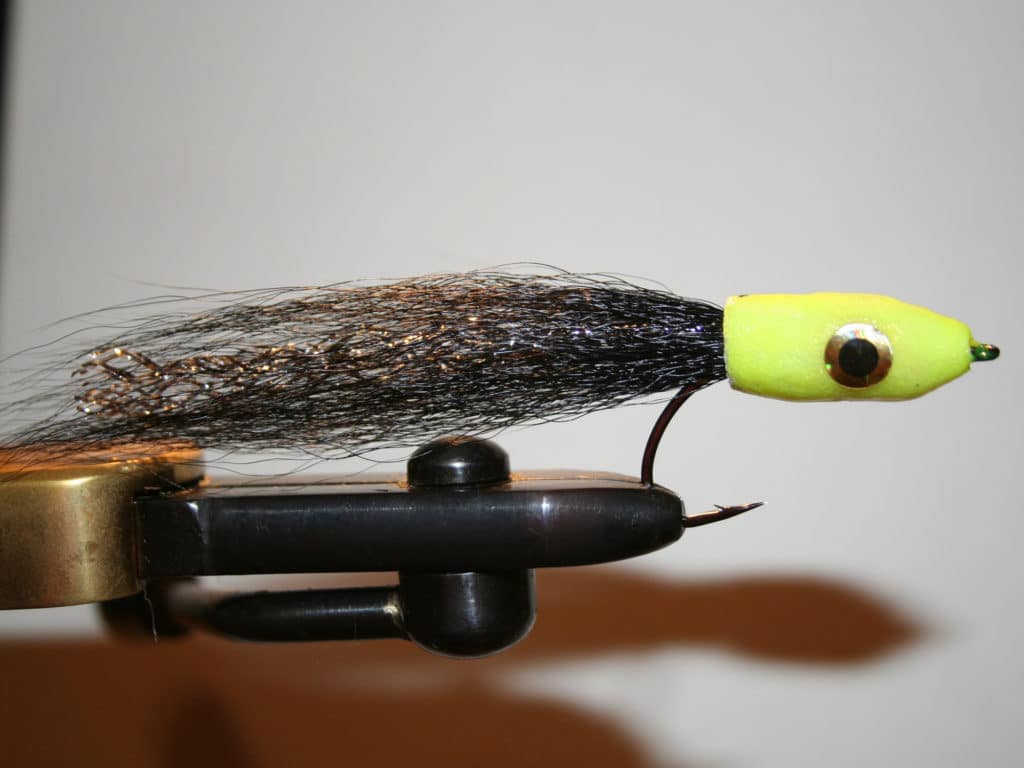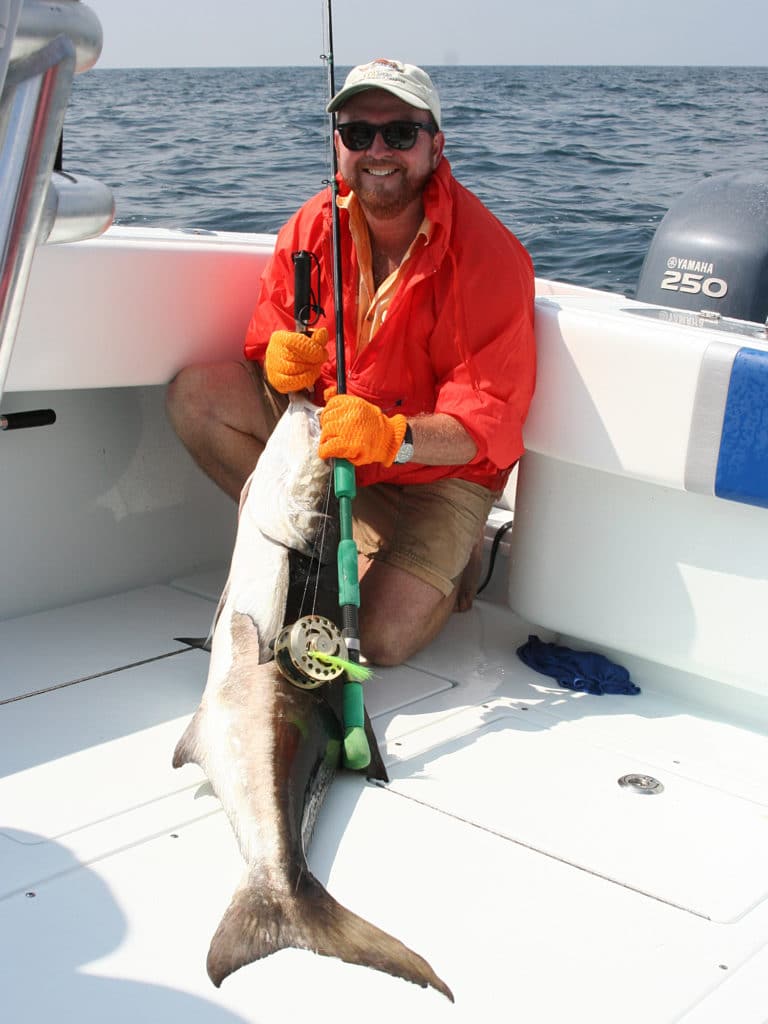
GULF COAST COBIA ON FLY
As target species go, cobia rank among the most cooperative for the fly angler. Their curiosity often betrays them. And because they frequently travel in packs, competition for every meal makes the fish more aggressive and less discerning, so they can be caught on a variety of flies, from poppers to streamers.
Although they rarely do so, cobia have been known to jump in their attempt to rid themselves of the hook. But even when they dont, the brute strength they display during the fight makes them a formidable adversary.
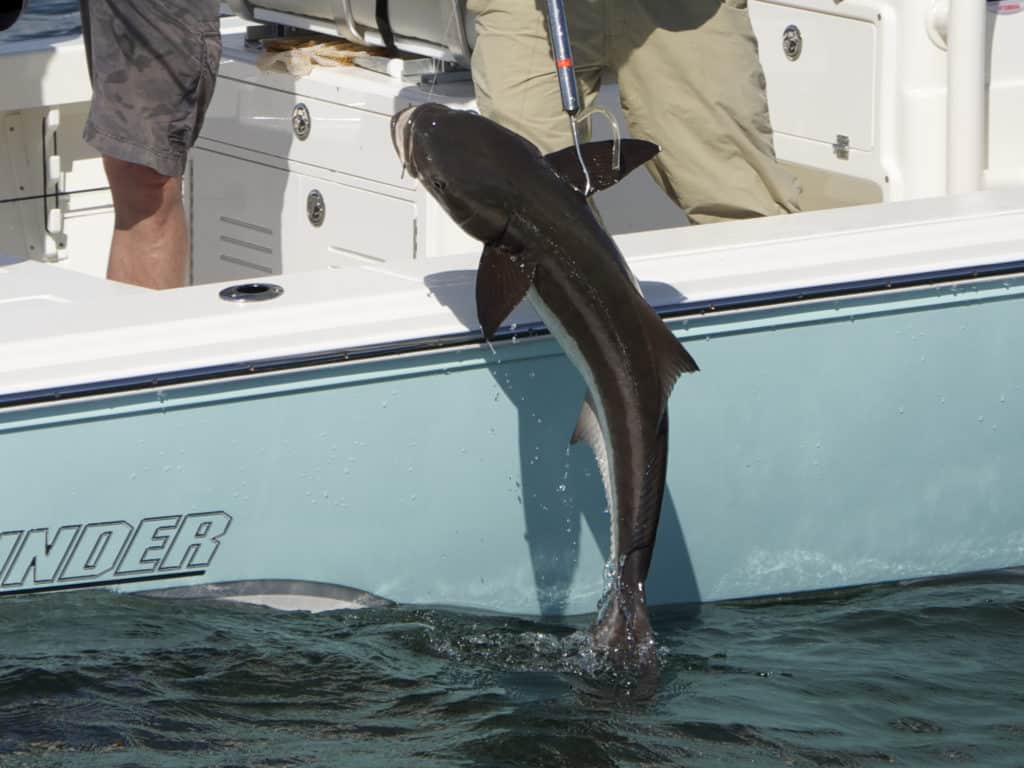
GULF COAST COBIA SEASON
PEAK SEASON
Cobia usually show up along the Texas and Louisiana coasts in June, and hang around through October. At times they can be found in the bays around gas wells, beacons, wrecks and navigation buoys. It’s not unusual to see them feeding near the surface along jetties. But most cobia are caught offshore around a variety of structure, fixed, like oil rigs and anchored shrimp boats, and adrift, like weed lines and other types of floating debris.
Along the Gulf coast, these fish are most abundant during the warmer months. Back in June of 2005, I plucked a monster that weighed 53 pounds and change from a school we found hanging around a group of oil and gas production platforms. That fish became the Texas state fly fishing record cobia, which still stands.
As I recall, not only did that school of ling refuse to leave the oil rigs we were fishing, they kept swimming right up to our boat. Catching some wasn’t a problem. The trick, however, was to place a fly in front of the trophy fish mixed in with a bunch of smaller cobia. After catching and releasing three of the smaller specimens, I finally managed to land a fast sinking Bonehead fly right in front of a heavyweight. I twitched the 4-inch streamer about three times, and the big cobia slurped it up.
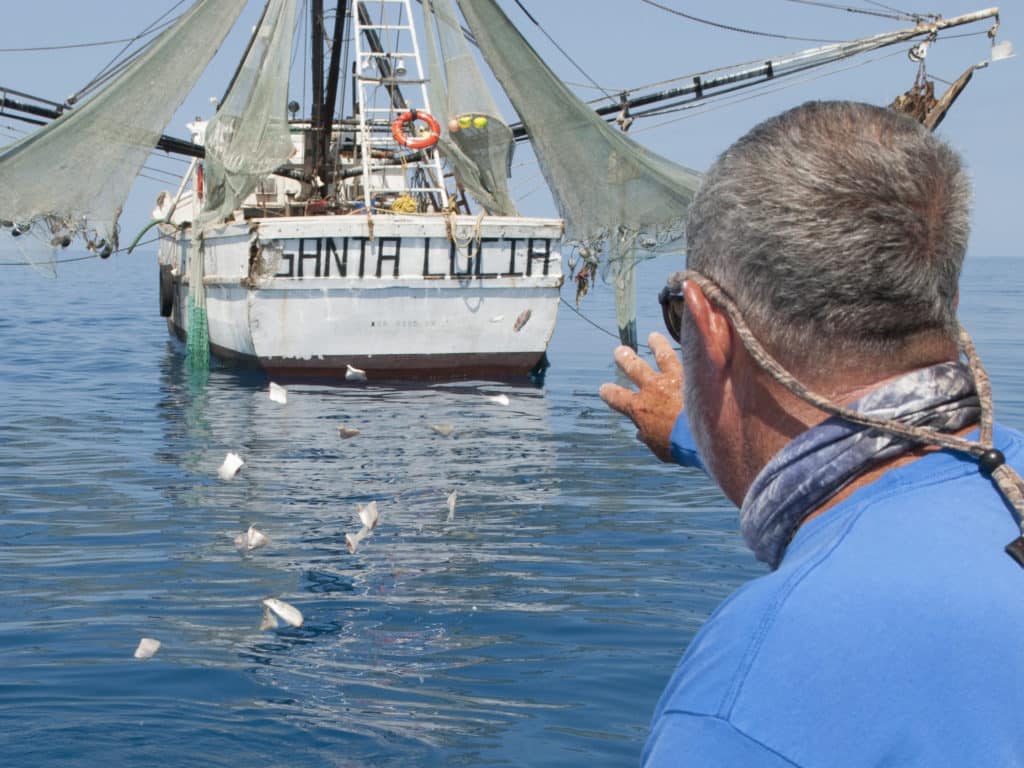
CHUMMING AROUND SHRIMP BOATS BRINGS COBIA WITHIN RANGE
TROPHY HUNT
Some of the heaviest ling seem to hang around anchored shrimp boats. During the offshore shrimping season, the boats pull their nets at night, then anchor and cull the bycatch at dawn. When the culling is going on is when ling are most likely to show up. Once there, they often hang out in the shadow of the big boats all day. One way to draw them out is to chum. Once they start feeding on your chum, you can drop a fast sinking streamer in the mix and expect to hook up. Of course, if it’s a trophy cobia you’re after, be selective and single out the larger ones when you are ready to cast.
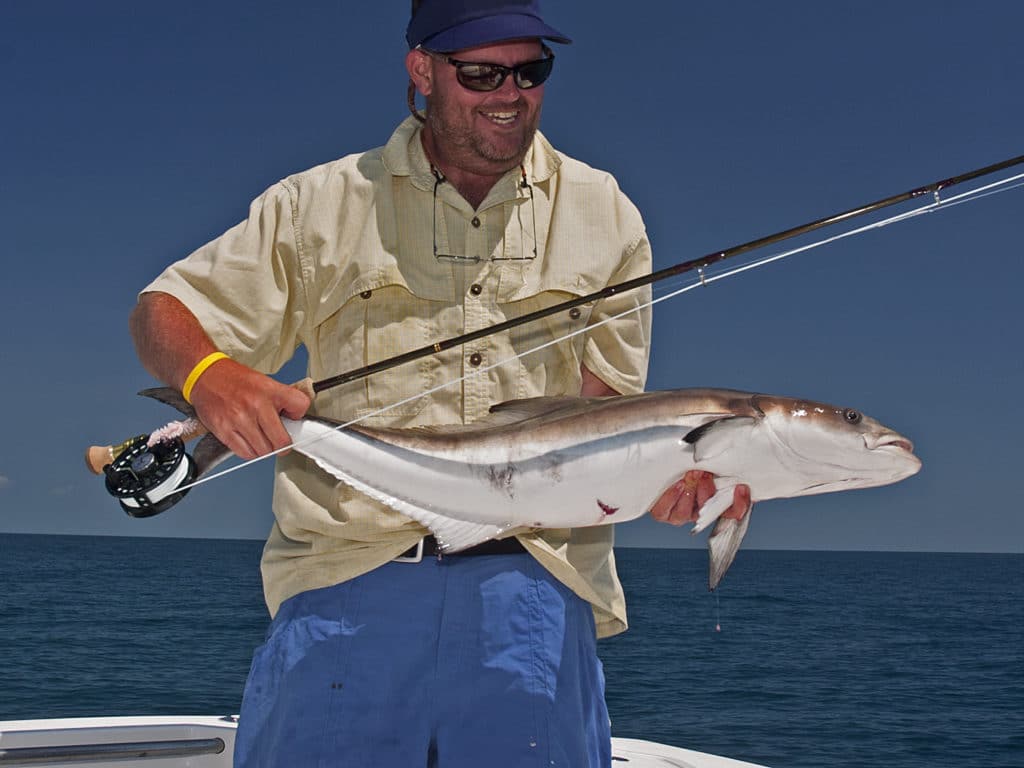
10- TO 12-WEIGHT RODS ARE IDEAL
CHOOSE YOUR WEAPONS
It’s usually best to pursue cobia with two 10- to 12-weight rods. One set up with a floating line, the other with a sink tip line. Matching both lines with short 6-foot leaders enables you to pick up and make another cast quickly whenever your presentation misses the mark, or when a fish moves or refuses the fly, which, luckily, doesn’t happen that often. A bite tippet is recommended, but since cobia lack big sharp teeth, 50-pound fluorocarbon is enough to endure any battle. If the water happens to be very clear and the fish appear uncommonly wary, step down to 40- or even 30-pound.
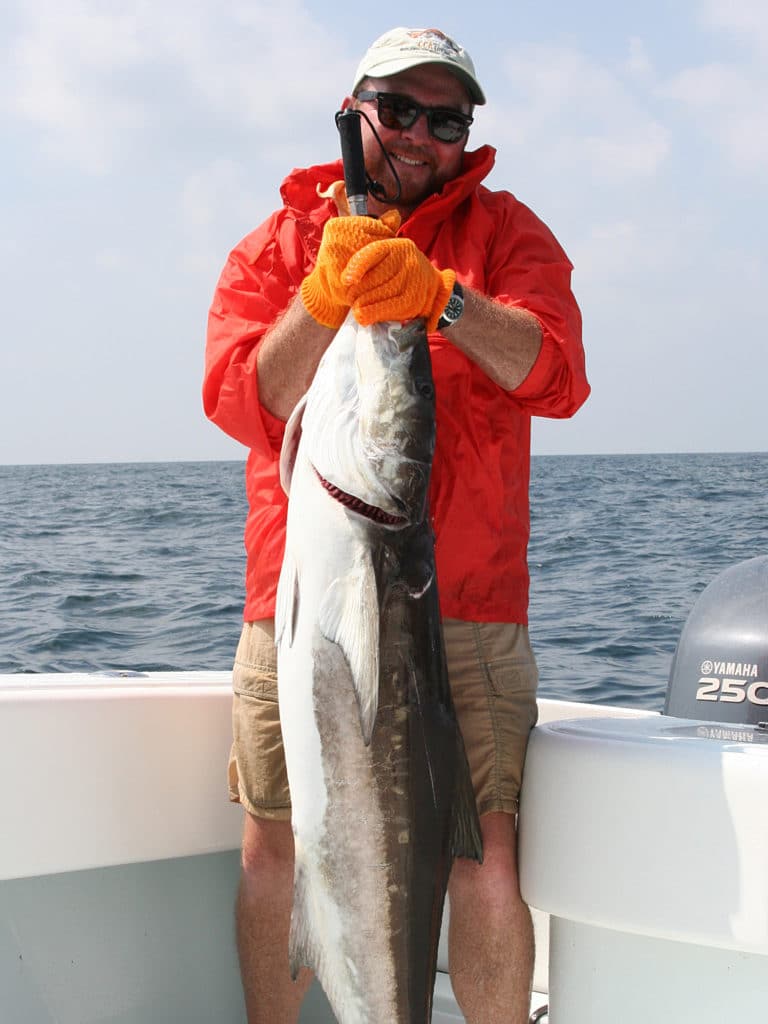
THE REWARD WHEN IT ALL COMES TOGETHER
BEHAVIOR ANALYSIS
Cobia gravitate toward structure and they rarely shy away from a boat, even when the motor is running. At times they will eat just about anything you drop in front of them, in fact, I actually had one attack an anchor line float. Nevertheless, there are days when these fish can be as persnickety as an educated Yellowstone rainbow trout.Then, it pays to shut off the motor and lead the fish by 10 feet or so with your casts to avoid spooking them. It’s always a good idea to keep some bait chunks cut and ready to toss in the water to spark some action when the cobia hang around but refuse to comit.
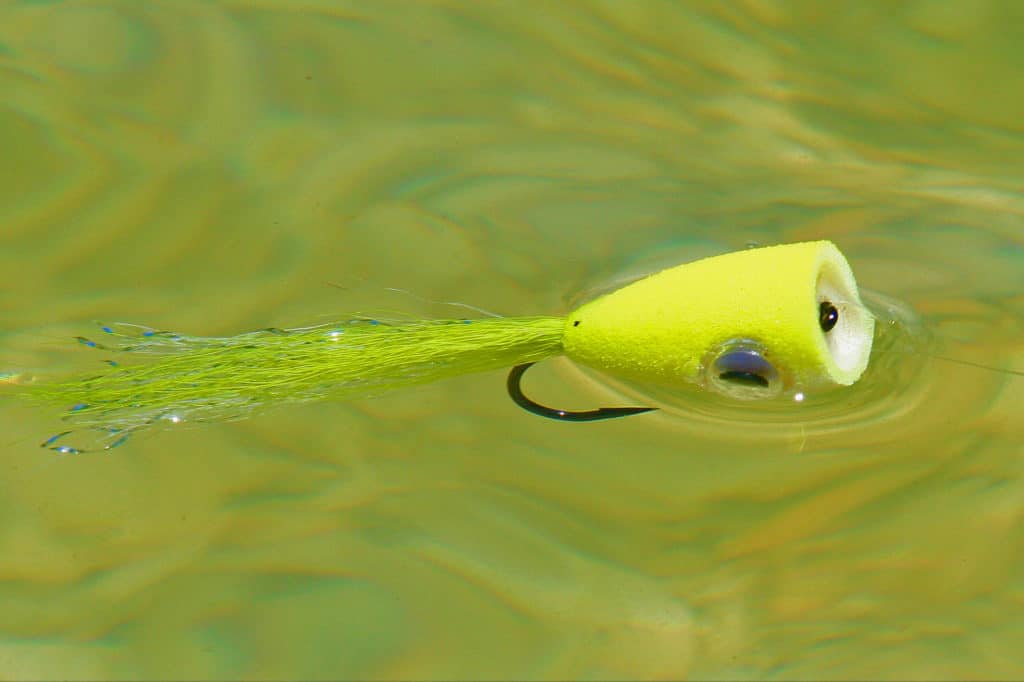
POPPERS WARRANT EXCITING SURFACE ACTION
RECOMMENDED FLIES
One of the most exciting ways to catch them is with a big popper. I make my own out of Styrofoam. A big two inch foam head and a bucktail body on a 2/0 hook is deadly. Top colors are chartreuse-and-white, yellow-and-white, red-and-white, and olive-and-white. But cobia also fall for baitfish patterns, especially weighted ones that sink fast, like a 4-inch Clouser Deep Minnow in an olive-and-white, orange, or lemon/lime.
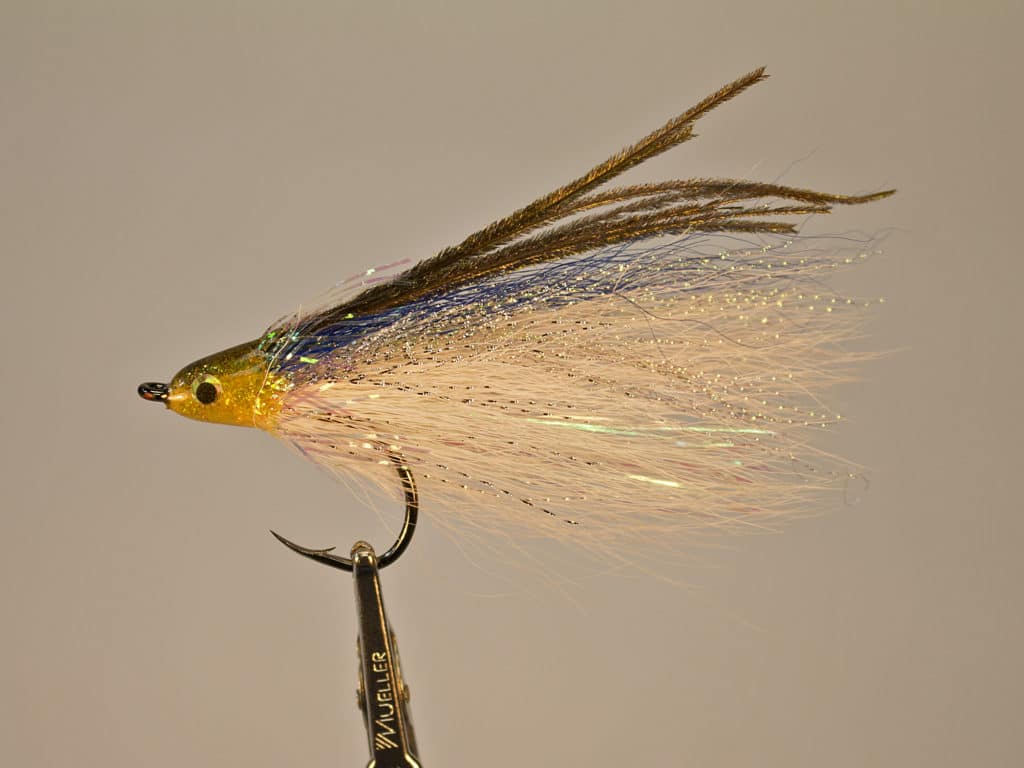
LARGE BAITFISH PATTERNS ALSO DO THE TRICK
BAITFISH PATTERNS TOO
Large Deceivers and various other large baitfish flies, like the Sardina fly and Enrico’s Blueback Herring, designed for tuna, kingfish and other offshore and nearshore species, work well for cobia. Blue back with a white and silver-flash belly is a good color scheme.
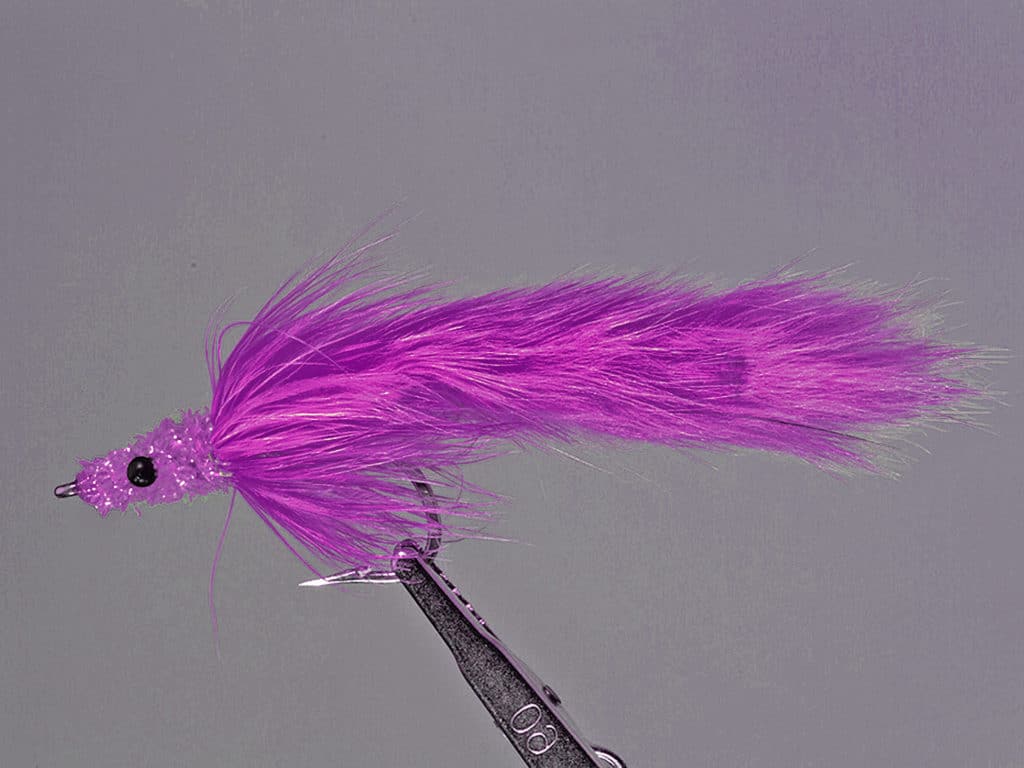
DON’T FORGET SOME EEL IMITATIONS
CARRY SOME EEL IMITATIONS Cobia love eels, so a few eel patterns should always be part of your fly arsenal whenever you target cobia. Black, purple, and neon colors like chartreuse and orange are tops.
